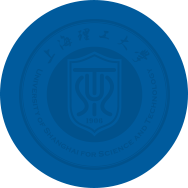By studying of the grinding mechanism and the grinding process, we expect to discover the nature of various grinding processes and grinding phenomena, and the change rule of, for example, the grinding force, the grinding power, the grinding heat and the distribution of the grinding temperature, factors affecting the formation of chips, grinding burns, grinding surface integrity, etc. For general grinding, extensive and in-depth research has been carried out on the grinding mechanism and the grinding process. In terms of the grinding mechanism and grinding process of precision and ultra-precision grinding, some researches have been done on different engineering materials (such as ceramics and glass) at home and abroad, but this kind of research is still not comprehensive, and often based on an incomplete theoretical system. Extensive research needs to be conducted further to find out its inner laws. Our research focuses on:
grinding process, grinding phenomenon (such as grinding force, grinding temperature, grinding burns and cracks)
grinding process parameter optimization research
computer simulation and simulation research on grinding process
1) Detection and control technology of the grinding process
The detection and control of the grinding process is to conduct real-time monitoring of the grinding process by analyzing and processing the signals collected by the sensors. Typical examples are to monitor and control the wear and damage of the grinding wheel, the size, shape and position accuracy, and processing of the workpiece surface quality.
In recent years, foreign scholars have done a lot of research work involved in grinding wheel wear detection, grinding burn detection, and grinding wheel dressing detection. In China, Northeastern University, Harbin Institute of Technology, and University of Shanghai for Science and Technology have also carried out research in the related fields, yet the gap is significant when compared with foreign research. The lab focuses on the following key technologies:
monitoring technology of grinding wheel’s wear and damage condition
online monitoring technology of workpiece processing surface quality
wheel dressing detection technology
2) Thermal error measurement and compensation technology in grinding process
In the machining of precision machine tools, the heat source has a great influence on the machining accuracy, which can only be improved through quantitatively study of the thermal deformation of the workpiece and the machine tool, with reasonable control and compensation during the machining process. The laboratory, as supportive research platform, mainly studies the detection, processing and analysis of the thermal error characteristics of the machine tool, the determination of the position of the temperature sensor, and the thermal error compensation method. With the facilities provided, the lab endeavors to master the methods for thermal error measurement and compensation of thermal deformation of the machine bed and the thermal deformation of the workpiece. In addition, the changes of temperature and heat flow in the grinding zone are dynamically monitored online, and the relationship between these changes and cutting process parameters and workpiece machining quality are analyzed, providing theoretical basis and actual reference data for optimizing process parameters.
3) Performance of high-precision motion-driven components
High-precision motion-driven components are necessary for the grinding wheel to maintain normal operation. It is also one of the important indicators for evaluating the performance of high-speed, high-efficiency and ultra-high-speed grinding machines. Therefore, the feed unit is required not only to operate flexibly, with high resolution, high positioning accuracy, no crawling, and a large range of movement (both for fast feed when empty stroke, and for low feed or micro feed during machining), but also to have large acceleration and sufficient thrust, high rigidity, fast dynamic response and good positioning accuracy.
The laboratory is to conduct research on performance of high-precision motion-driven components by establishing a linear motor dynamic and static performance test bench, a high-speed ball screw feed test bench and an electric spindle performance test bench, boosting China’s machine tool industry to a new height.
Ongoing Projects:
National Key R&D Program of the Ministry of Science and Technology, ultra-fast laser precision manufacturing technology and equipment for typical hard and brittle components, December 2017-December 2020

